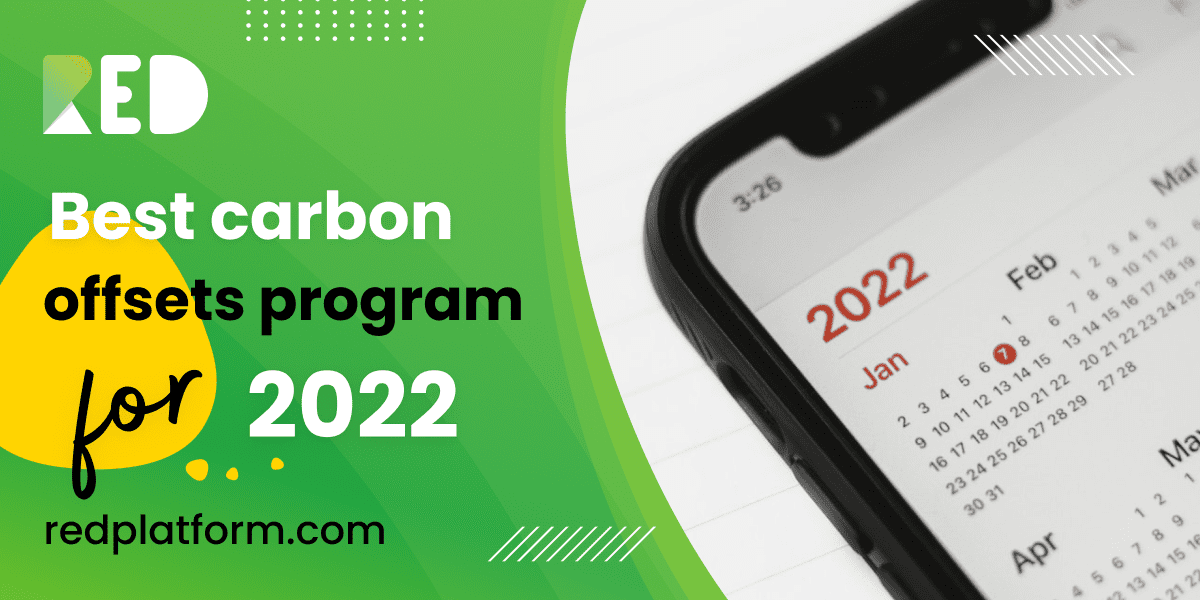 To survive in the modern world, we each have a carbon footprint. We produce emissions when we eat, shop, and travel. Alternatively, if we are a business, activities like commuting, electricity generation, industrial processes, shipping, and agriculture contribute to our carbon footprint.
To survive in the modern world, we each have a carbon footprint. We produce emissions when we eat, shop, and travel. Alternatively, if we are a business, activities like commuting, electricity generation, industrial processes, shipping, and agriculture contribute to our carbon footprint.
We must significantly reduce our carbon emissions to prevent climate disasters and meet the Paris Agreement’s climate commitments. Even if we eliminated all emissions today, there’d still be too much carbon. As a result, we must compensate by funding projects that cut or eliminate emissions in other areas. This article will also discuss the best carbon offsets.
What is a carbon offset?
A carbon offset is a greenhouse gas reduction – or a rise in carbon sequestration (e.g., via land restoration or tree planting) – that is used to counteract elsewhere emissions. A carbon offset credit is a transferable instrument approved by governments or independent certifying bodies to reflect a decrease in CO2 emissions of one metric tonne or an equivalent amount of other greenhouse gasses. The buyer of an offset credit can “retire” it and use the underlying decrease to their GHG reduction targets.
The idea behind offset credits is that they are used to transfer a net climate benefit from one business to another. It makes little difference where GHGs are lowered because they mix globally in the atmosphere. The consequences of an organization ceasing an emission-causing activity or enabling an equal emission-reducing activity someplace else in the world on climate change are the same. Carbon offsets are designed to make the second choice more accessible and cost-effective for businesses.
What to look for when choosing a carbon offset program
Carbon offset projects must meet several criteria, one of which must be supplementary measures. In other words, they could not function without the financial assistance of businesses. Furthermore, their contribution to CO2 reduction in the air must be guaranteed over time and quantifiable. Again, the CO2 emissions saved and certifications earned through a project can be used only once to offset other CO2 emissions; the certificates are then withdrawn and cannot be sold again. This is accomplished through the official registries of the standards.
To conform with the CDM, projects must also meet internationally recognized criteria and the general requirements outlined above. The “Verified Carbon Standard” or the “Gold Standard” are two examples of stringent certification and verification criteria (VCS). Independent third parties monitor the projects’ emissions reductions, certified annually in hindsight. Because there is no efficiency standard for carbon offset technologies, it’s crucial to note that any carbon offset project that meets the criteria above is entirely effective in its own right.
Top five carbon offset initiatives – best carbon offsets
Individuals and corporations utilize carbon offset schemes to offset their carbon emissions. These programs’ carbon offset projects get designed to result in actual reductions in emissions. Individuals and corporations may invest in carbon offset projects locally or abroad to offset their carbon impact through carbon offset programs. Following are the top 5 and best carbon offsets initiatives.
- Restart Energy Democracy Platform;
- NativeEnergy;
- Shopify;
- Sustainable Travel International;
- TerraPass.
Restart Energy Democracy Platform
The Restart Energy Democracy Platform (RED Platform) employs Blockchain technology to provide consumers with a unique experience in carbon offsets, sustainability certificates, and renewable energy from producers to end-users. This platform is a social energy platform. We aim to transform the way we engage with energy, CO2 offset systems, and the incentivizing of renewable energy consumers and providers.
The RED platform enables both individuals and companies to engage in the world’s first tokenized CO2 offset platform and earn money from energy through the only 100% digital Energy Selling and Consultancy Franchise on the market.
Benefits of carbon offsets programs
Carbon offsetting has advantages on both sides of the equation. Following are the benefits of carbon offsets.
- It aids environmental programs that cannot raise funds on their own;
- it provides corporations with more opportunities to minimize their carbon footprint.
Many businesses cannot reduce their carbon footprint as much as they would like. In other circumstances, this is because their impression is currently tiny (for example, a software firm), yet they wish to expand. Other businesses, such as heavy equipment or ocean shipping, now lack low-carbon choices to serve their markets. Companies can compensate for emissions that they cannot eliminate by assisting in the funding of environmental projects that cut emissions.
While many offsetting purchases are optional, they are required in some jurisdictions to meet local standards and laws and avoid penalties. Another advantage of the carbon offset scheme is that it provides regulators with a weapon for enforcing environmental policies.
Other businesses employ offsets to claim that all or part of their operations is “carbon neutral” or “carbon negative.” It also gives these businesses a system to identify their carbon footprint. Brands prefer to conduct business with such companies.
It’s never too late to become more sustainable. Join the RED Platform.


